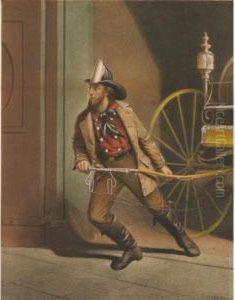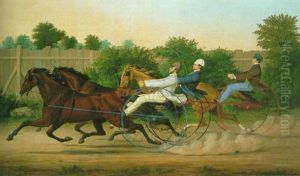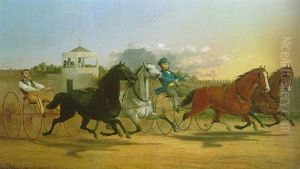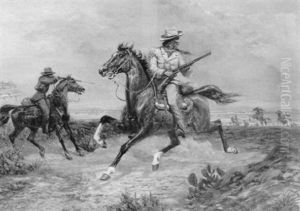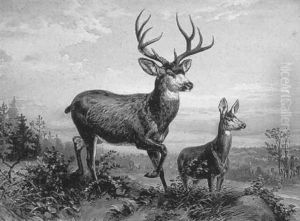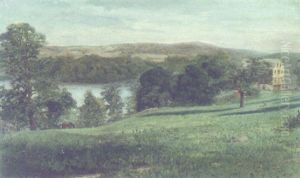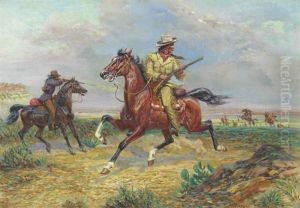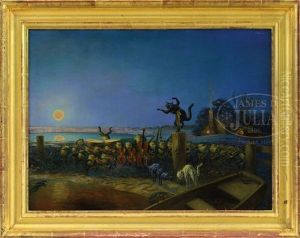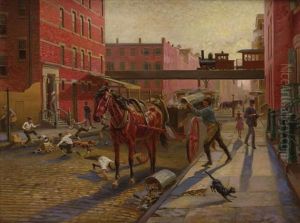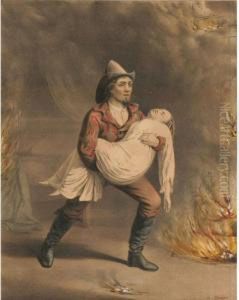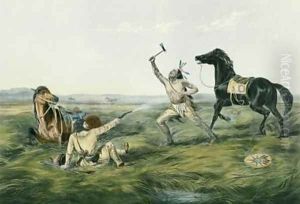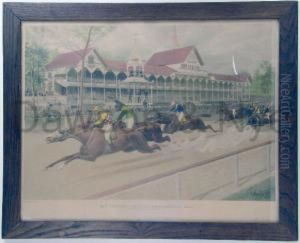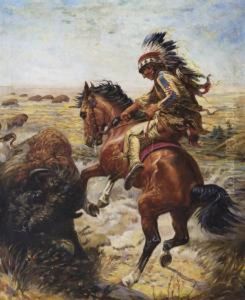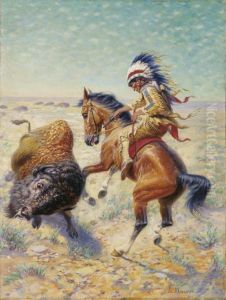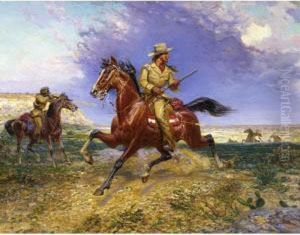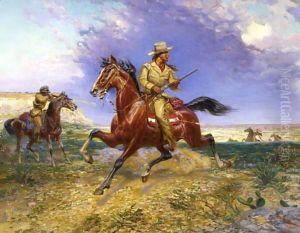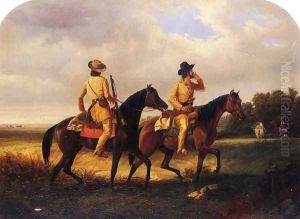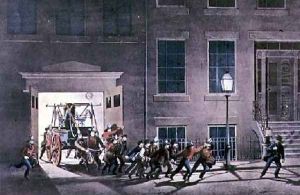Louis Maurer Paintings
Louis Maurer was a German-American lithographer and artist, known for his significant contributions to the development of lithography in the United States. Born in Biebrich, Rhine Province, Germany, on February 21, 1832, Maurer emigrated to the United States in 1851, settling in New York City. His early career was marked by his work with various lithography firms, including that of Napoleon Sarony and Currier & Ives, where he honed his skills in this nascent art form.
Maurer's work with Currier & Ives, one of the most prolific and respected printmakers in the United States, was particularly notable. He contributed to many of their prints, which depicted a wide range of subjects from landscapes and scenes of daily life to political cartoons and images of significant events. His ability to capture the essence of American life during the 19th century in his lithographs earned him a respected place among American artists of his time.
In addition to his work with lithography, Louis Maurer was also involved in the development of chromolithography, a color printing method that allowed for the mass production of colorful prints. This innovation greatly influenced the accessibility of art to the general public and the commercial art industry in the United States.
Despite his success as a lithographer, Maurer also pursued painting, focusing on genre scenes, landscapes, and portraits. His paintings, though less known than his prints, showcased his versatility and keen eye for detail.
Louis Maurer lived a long and productive life, passing away on July 19, 1932, in New York City. He left behind a legacy of artistic achievements that contributed to the evolution of American art in the 19th century. His work remains a valuable resource for understanding the cultural and social landscape of America during this period.
